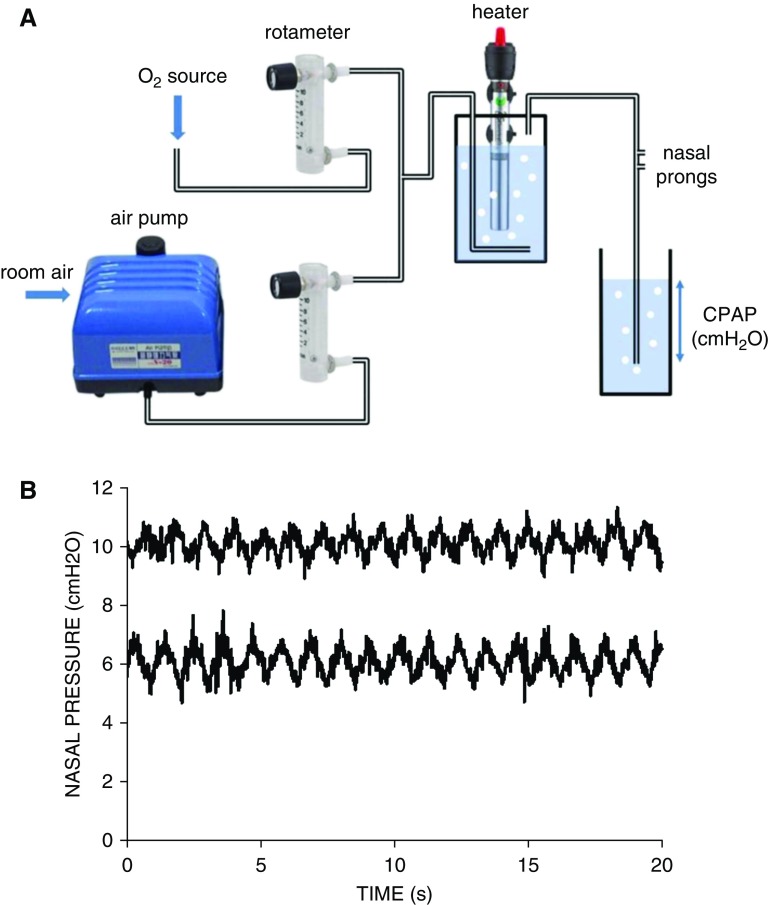Figure 1.
(A) Diagram of the continuous positive airway pressure (CPAP) setting, including its basic components: a domestic aquarium air pump (Hailea V-20; 15W; >300 cm H2O; 20 L/min, 2.5 kg; 230 × 185 × 180 mm), low-cost rotameters (CNBTR LZQ-6 0-10LPM; 65 × 22 × 90 mm) with precision flow delivery within ±0.2 L/min when compared with a reference Fleisch pneumotachograph, and a domestic aquarium water heater/controller (RS Electrical RS-139; 25W; 22.5 cm length) providing up to 10 L/min output air at 36°C from room air at 20°C. The retail sale cost by internet of these three components was $60, $15, and $10, respectively. (B) Nasal pressures actually applied at the newborn nasal prongs by the novel device for CPAP settings of 6 and 10 cm H2O. The simulated newborn infant was breathing with a Vt of 20 ml and frequency of 55 breaths/min while 8 L/min of humidified heated airflow circulated through the circuit.

